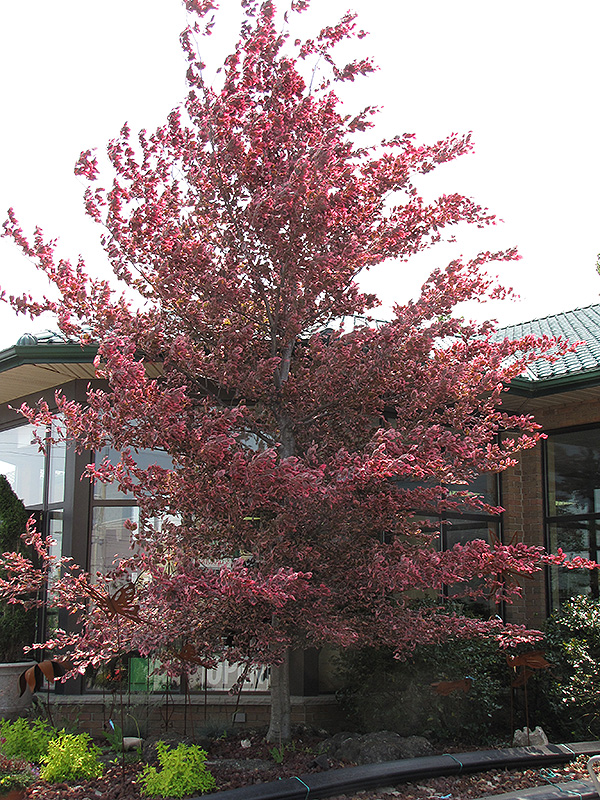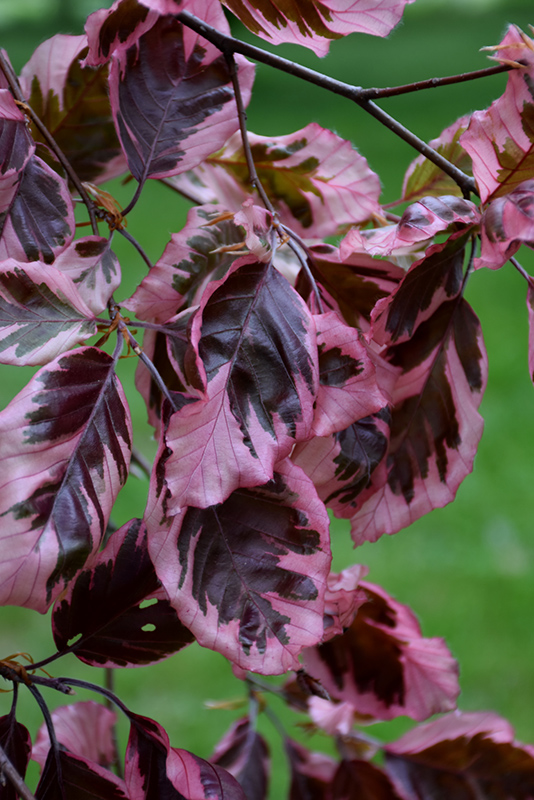Digging deeperPlant Library
Tricolor Beech
Fagus sylvatica 'Roseomarginata'
Height: 30 feet
Spread: 20 feet
Sunlight:
![]()
Hardiness Zone: 5
Other Names: Common Beech, European Beech
Description:
A large stately color accent tree with incredible green, white and pink-variegated foliage, often mottled on the same leaf, must be seen to be believed; quite particular about growing conditions, requires rich soil, significant moisture and room to spread
Ornamental Features
Tricolor Beech is primarily valued in the landscape for its decidedly oval form. It has attractive white-variegated burgundy foliage with hints of pink. The serrated pointy leaves are highly ornamental and turn an outstanding coppery-bronze in the fall. The smooth silver bark is extremely showy and adds significant winter interest.
Landscape Attributes
Tricolor Beech is a dense deciduous tree with a shapely oval form. Its average texture blends into the landscape, but can be balanced by one or two finer or coarser trees or shrubs for an effective composition.
This is a relatively low maintenance tree, and is best pruned in late winter once the threat of extreme cold has passed. It is a good choice for attracting birds to your yard, but is not particularly attractive to deer who tend to leave it alone in favor of tastier treats. It has no significant negative characteristics.
Tricolor Beech is recommended for the following landscape applications;
- Accent
- Shade
Planting & Growing
Tricolor Beech will grow to be about 30 feet tall at maturity, with a spread of 20 feet. It has a low canopy with a typical clearance of 3 feet from the ground, and should not be planted underneath power lines. It grows at a slow rate, and under ideal conditions can be expected to live to a ripe old age of 100 years or more; think of this as a heritage tree for future generations!
This tree should only be grown in full sunlight. It does best in average to evenly moist conditions, but will not tolerate standing water. It is not particular as to soil type or pH. It is somewhat tolerant of urban pollution, and will benefit from being planted in a relatively sheltered location. Consider applying a thick mulch around the root zone in winter to protect it in exposed locations or colder microclimates. This is a selected variety of a species not originally from North America.
A NetPS Plant Finder tool
This Plant Library is for informational purposes only. We may or may not carry the items listed. During many times of the year, we may carry many more plants in our store than are listed in the Plant Library. Please contact us directly at 303-690-4722 or visit our store for current availability and for assistance.

